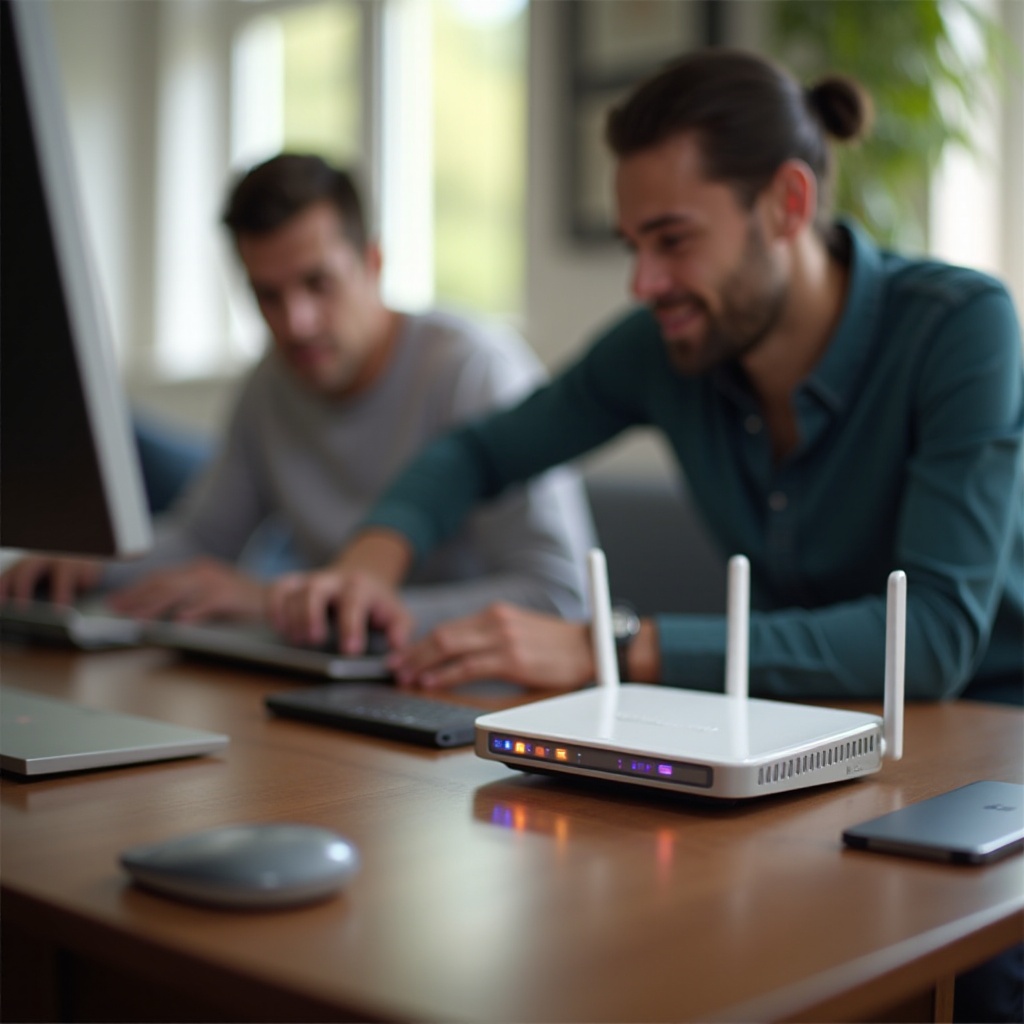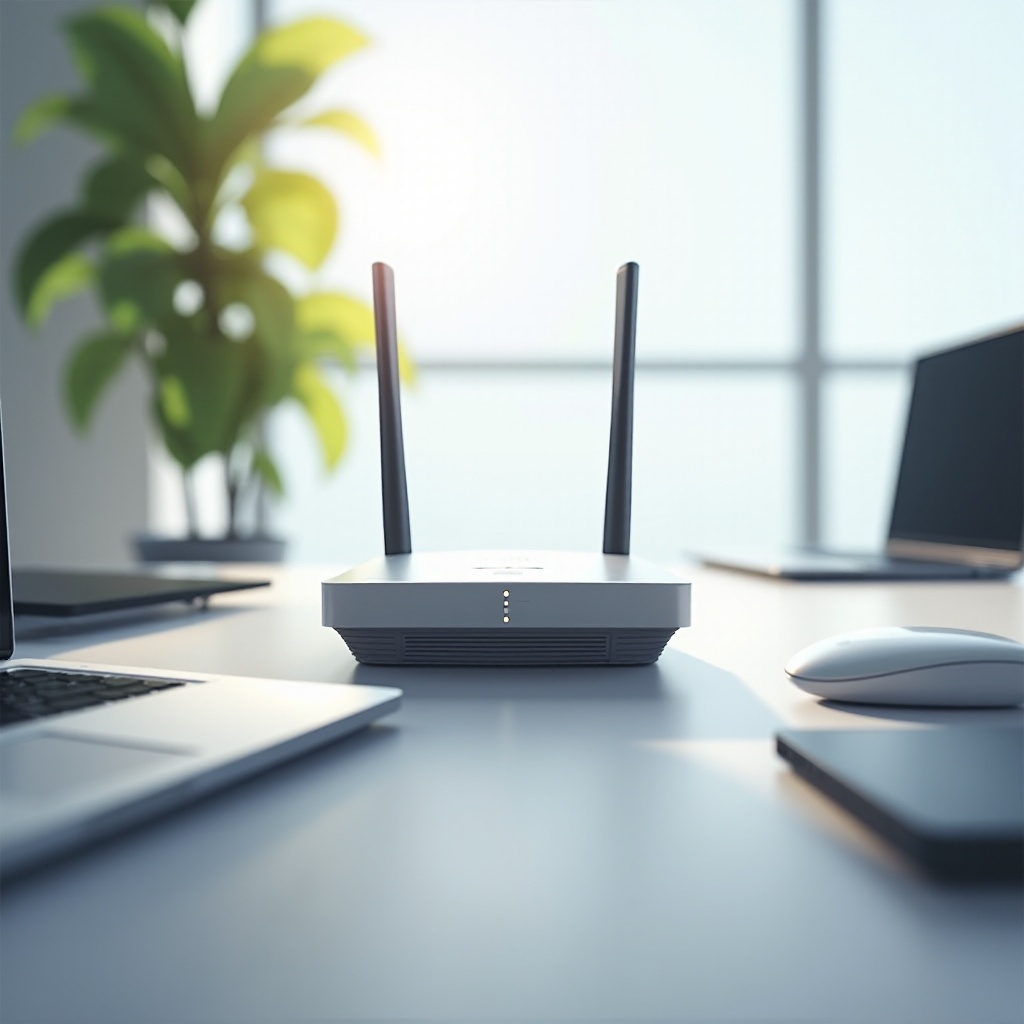Introduction
Is your Wi-Fi coverage lacking in certain parts of your home? Many individuals face the challenge of Wi-Fi ‘dead zones’, but transforming an old router into a Wi-Fi repeater could be your solution. By repurposing your router, you can expand your internet signal, ensuring seamless connectivity throughout your home. This cost-effective method is simple, even for those not technically inclined. In this guide, we’ll explore the steps to convert your spare router into a Wi-Fi repeater, enhancing your network’s reach with some practical optimization tips.
Using a router as a repeater allows you to extend Wi-Fi access into areas of your home with poor or no signal, creating a seamless browsing experience for all users.

Understanding Wi-Fi Repeaters
Wi-Fi repeaters, also known as range extenders, are essential in extending the reach of your wireless network. They function by receiving your current Wi-Fi signal, amplifying it, and transmitting the boosted signal to expand coverage. This process creates a secondary network, enhancing areas where the primary network may fall short.
While repeaters extend coverage, they do not increase the speed of your main network. By sharing the same bandwidth over a larger area, repeaters may slow down connections if too many devices are utilizing Wi-Fi simultaneously. Therefore, understanding the balance between coverage and speed is vital for maximizing effectiveness.
Preparing Your Router for Repeater Mode
Before you configure your router, preparation is key. Not all routers have a built-in repeater mode, but many can be adapted through third-party firmware like DD-WRT or Tomato. Check your router’s compatibility for such firmware and consult the installation guidelines.
First, reset your old router to its factory settings for a fresh start. You typically do this by pressing the reset button on the router for about 10 seconds. Connect the router to a computer using an Ethernet cable for a stable setup connection. Ensure your main router’s settings, like SSID and password, are ready, as you’ll need these for the configuration.
Steps to Configure Your Router as a Repeater
Accessing the Router’s Admin Interface
- Connect your old router to a computer using an Ethernet cable.
- Open a web browser and enter the router’s default IP address (commonly 192.168.1.1 or 192.168.0.1) to access the admin interface.
- Log in using the default credentials, which are usually provided on the router or in its manual.
Modifying IP Address and Disabling DHCP
- In the admin settings, change the router’s IP address to be on the same subnet as your main router to avoid IP conflicts (e.g., if your main router is 192.168.1.1, set this router to 192.168.1.2).
- Find the DHCP settings and disable the DHCP server; the repeater should not assign IP addresses, leaving this task to the primary router.
Connecting to the Main Network
- Access the wireless settings in the admin interface.
- Set the Wireless Mode to Repeater (or Bridge Mode if Repeater is unavailable).
- Enter the SSID and password of your main network for the repeater to connect to it.
- Save the changes and restart the router.
After these steps, confirm the connection by attempting to access the internet near your configured repeater.

Optimizing Your Repeater Setup
Ideal Placement for Maximum Coverage
Positioning your repeater optimally is crucial for performance. Ideally, place it at a midpoint between your main router and the area needing coverage with minimal physical barriers. Walls, large furniture, and electronic appliances can absorb signals, so pick a location with minimal interference.
Adjusting Frequency Bands and Channels
If your router supports dual-band frequencies, consider placing the repeater on a less crowded frequency band (either 2.4GHz or 5GHz) based on device compatibility. Use router admin tools or apps like Wi-Fi Analyzer to identify the least congested channel for your network, minimizing interference from neighboring networks.
Transitioning now to troubleshooting ensures problems can be resolved efficiently, maintaining optimal connectivity.
Troubleshooting Common Issues
Even after setup, issues can arise. For any connectivity problems, check if both routers have compatible firmware versions. Ensure the repeater is within the signal range of your main router and verify SSID and password details. Adjust the repeater’s location if signals are weak, and lastly, restart both routers to clear any temporary glitches.

Conclusion
Transforming an older router into a Wi-Fi repeater can effectively address Wi-Fi dead zones, ensuring robust and reliable internet access throughout your home. Strategic placement and periodic tweaks allow users to enjoy consistent connectivity in previously unreachable areas. This setup brings the convenience of a strong Wi-Fi signal to every corner.
Frequently Asked Questions
Can any router be used as a Wi-Fi repeater?
Not all routers support repeater mode. However, many can act as repeaters with custom firmware like DD-WRT or Tomato. Check the router’s specs or manufacturer’s site for compatibility.
How do I know if my repeater setup is working effectively?
Check for improved signal strength in dead zones and use a Wi-Fi analyzer app to measure speed and strength in various house zones. Reassess placement and settings if issues continue.
Will using a router as a Wi-Fi repeater slow down my internet speed?
A repeater can reduce speed since it shares bandwidth over a larger area, dividing the existing connection. Adjust settings and limit device connections to mitigate speed reduction.
